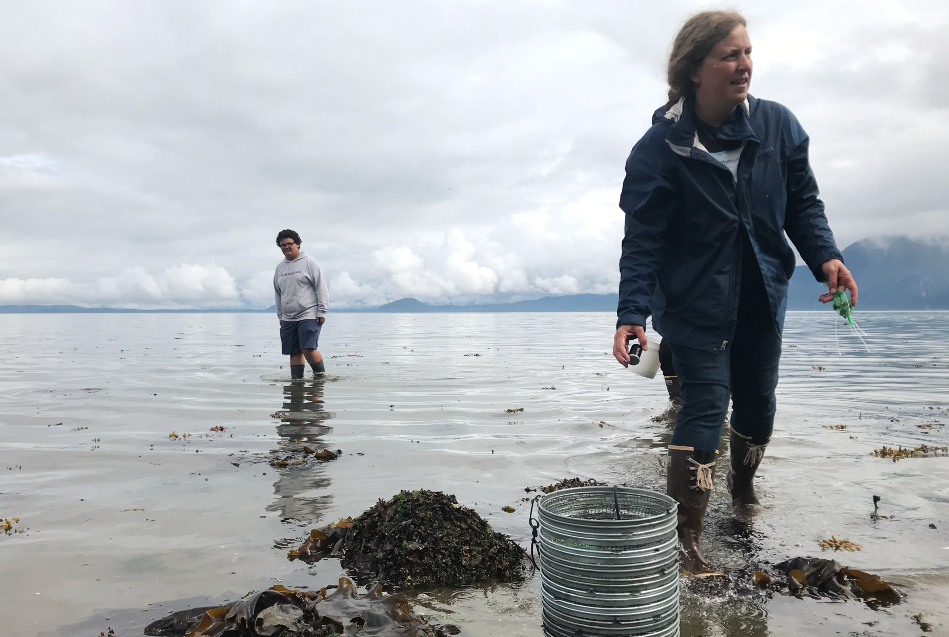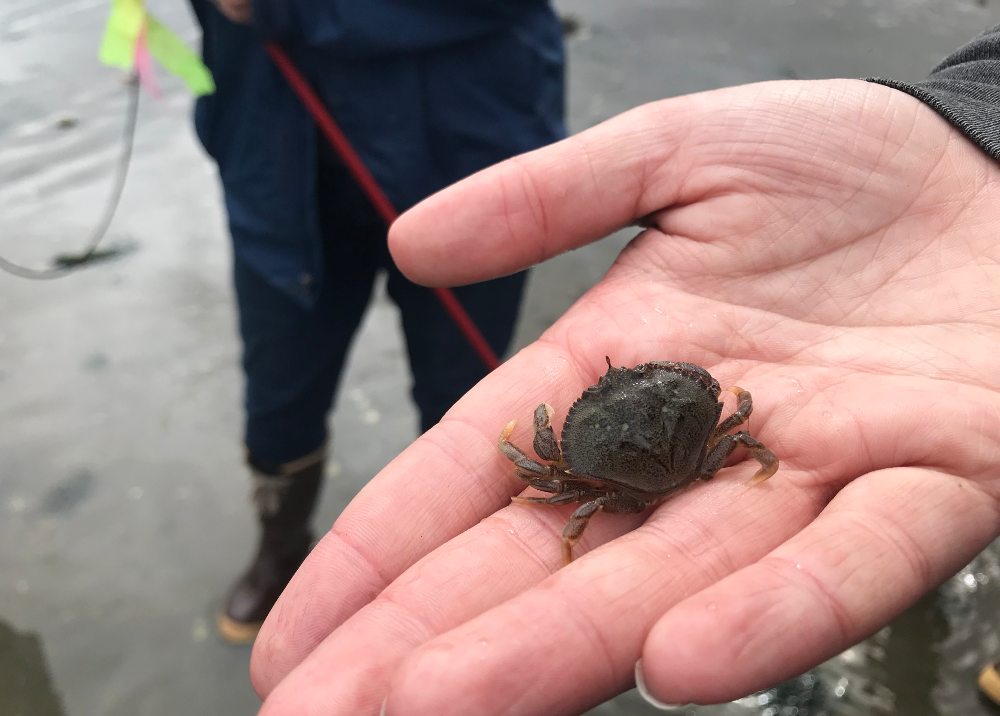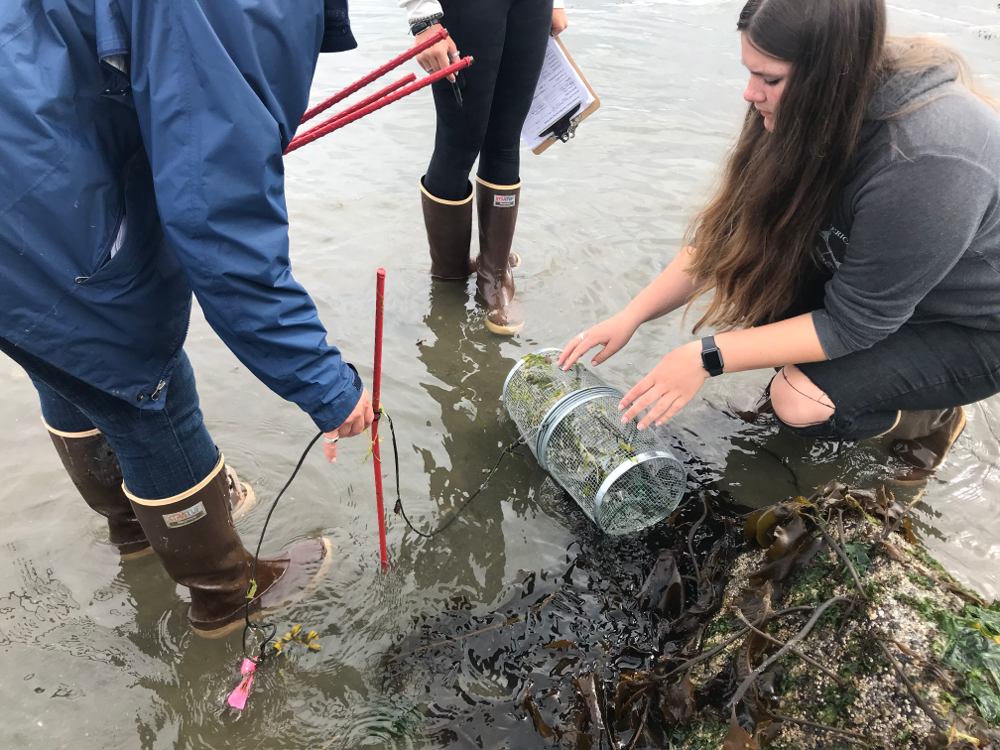
One small crustacean is costing New England shellfisheries millions of dollars. The European green crab might be small, but it can destroy vital habitats for animals all along the food chain.
In July 2020, green crab were found in Haida Gwaii, the closest they’ve ever been to Alaska. With the help of volunteers, the Alaska Department of Fish and Game hopes to stay one step ahead of this invasive species.
Katie Anastas reports on the latest efforts in Petersburg.
It’s low tide at Sandy Beach. Sunny Rice and a group of volunteers walk toward a crab trap. They’re on the lookout for an invasive species called the European green crab.
Green crab are small but mighty, measuring around 3 or 4 inches wide. They have a dark greenish-brown shell with yellow spots. They have five triangular points on the edge of their shell on either side of the eyes, and three rounded lobes between them.
To check whether the crabs have made it this far north, the Alaska Department of Fish and Game has asked volunteer groups to set up traps all over Southeast. Rice is with the Alaska Sea Grant Marine Advisory Program and wanted to get involved. She and a group of high school students with the Petersburg Indian Association’s natural resource management program have set six traps at Sandy Beach and two at Hammer Slough.
Today is the second day they’ve checked the traps at Sandy Beach. Once again, there are no green crabs.
“Unfortunately, you guys, this is sometimes what monitoring is about,” Rice tells the students. “And as we know, we don’t really want to find a green crab anyway.”

Getting a group of kids — or anyone — excited about not finding something is a bit of a challenge, says Tammy Davis. She’s the Invasive Species Program coordinator for the Alaska Department of Fish and Game.
“In this case, you’re hoping to get zeros across the board, which, you know, as a citizen monitor may be somewhat of a deterrent because getting zeros isn’t as exhilarating as finding that thing that you’re looking for,” Davis says.
But citizen monitors are a vital part of the search for green crab in Alaska, because of the large size of the geographic area.

Green crab could be a serious threat to juvenile salmon, Dungeness crab, and other wildlife vital to Southeast ecosystems and industries.
Davis said the big problem is habitat destruction. Green crab like to get into eelgrass beds while they search for clams, mussels and other invertebrates. When they do, they clip the leaves or uproot the eelgrass entirely. That leaves other animals, like juvenile salmon, without a habitat.
“That whole food chain gets disrupted when green crab move in,” Davis says. “It’s sort of a cascading impact, both destruction of the habitat and altering the food chain.”
It’s happening on the East Coast, too. In New England, green crab are uprooting eelgrass and eating soft-shell clams. East Coast shellfisheries have lost an estimated 14 to 18 million dollars annually because of green crab, according to Environmental Protection Agency research. Green crab populations there continue to grow because of rising sea temperatures.
As sea temperatures rise here, Davis said, Alaska could face a similar economic and ecological threat as New England.
“Alaskans love their seafood. We love both commercially and recreationally catching fish. Aquatic invasive species put those things at risk, either through predation or habitat destruction. So it matters to all of us whether invasive species get introduced and then spread.
So what can you do if you see a green crab? Davis says pick it up, take it home, and get a good photo of it, especially the top of the shell. You can call the invasive species hotline or upload the photo online to the department’s Invasive Species Reporter.
Fish and Game is always looking for volunteer groups to help set traps, too. But even if you can’t commit to setting traps each month, you can still play a part.
“Next time you’re walking on the beach, look down,” Davis said. “And if you find a shell that doesn’t quite look like a Dungey or doesn’t quite look like whatever crab is native in your area, that could be really important. You could be the person who finds the first green crab.”
The invasive species hotline is 1-877-INVASIV (1-877-468-2748), and you can find the Invasive Species Reporter at adfg.alaska.gov.











